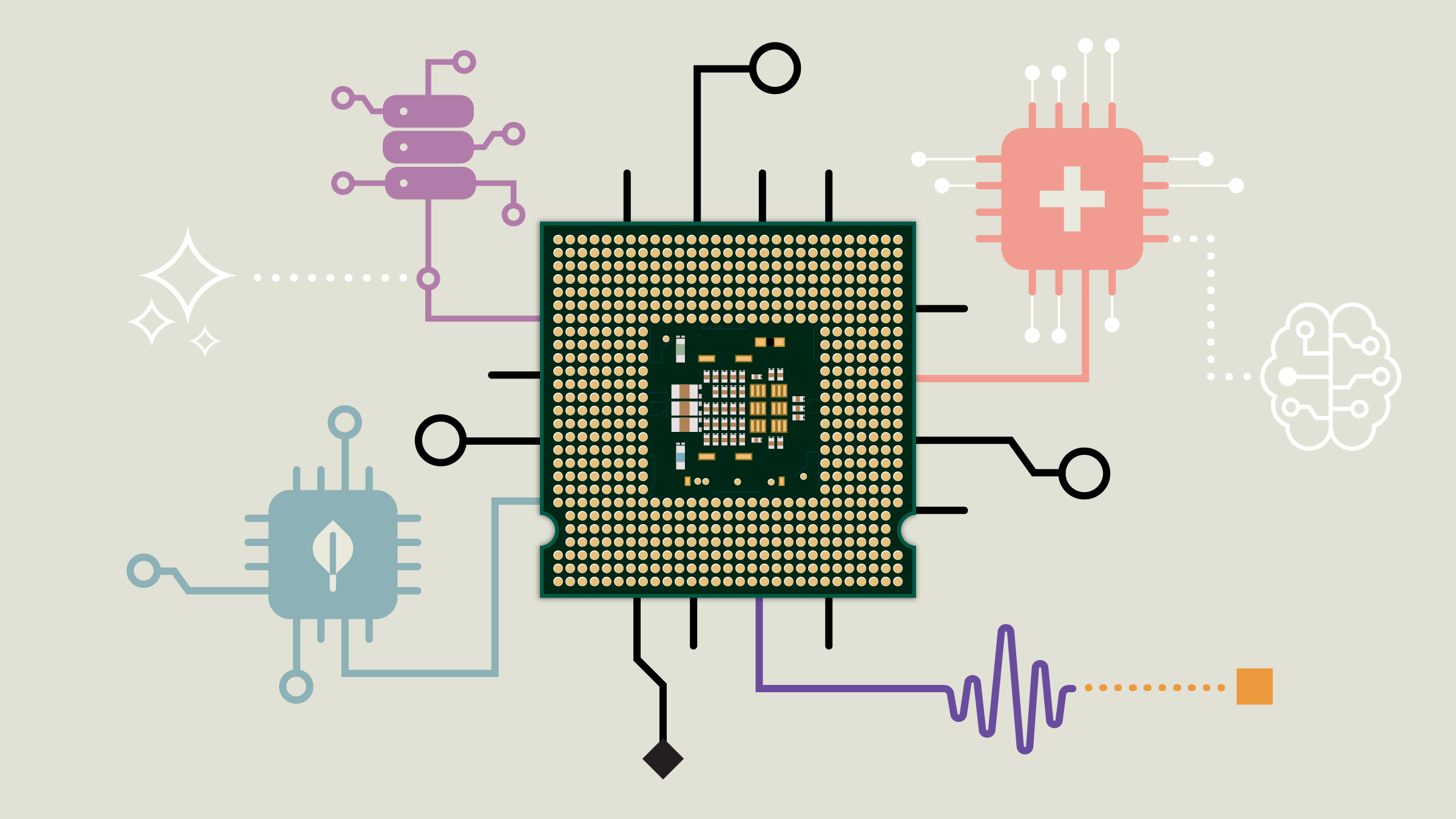Kalifornialainen Qualcomm (QCOM) oli matkapuhelimia valmistaneen Nokian jatkuva kiusa. Yhtiö oli kehittänyt lukuisia tärkeitä patentteja, joista se pyrki saamaan tuottoja erityisesti puhelinvalmistuksen jäteiltä Ericssonilta (ERIBR) ja Nokialta (NOK1V).
Ericssonin ja Nokian puhelinbisnekset menivät tunnetusti lopulta pieleen, mutta Qualcomm on onnistunut pysymään yhtenä mobiilialan suurista toimijoista tähän päiviin asti, kuten markkina-arvon kehityskin kertoo.
(Lisää Qualcommin ja Nokian historiasta lue "Nokia ja Qualcomm tappelivat, kumpi voitti?")

Patenteissa Qualcommilla on erityisen vahva asema kolmannen sukupolven matkapuhelimissa. Vaikka nyt valmistetaankin neljännen ja viidennen sukupolven verkkoihin (4G ja 5G) sopivia puhelimia, laitteen täytyy kuitenkin pystyä toimimaan myös alemman tason verkoissa, jos 4G/5G:tä ei ole saatavilla. Näin Qualcomm saa siivun patenttiensa kautta.
Qualcommin bisneksen tulevaisuuden ytimessä ovat kuitenkin mobiililaitteisiin asennettavat sirut, joissa pääasiakkaat ovat Apple ja Samsung. Viime viikolla Qualcomm koki tällä saralla takaisun, kun uutistoimisto Bloomberg kertoi Samsungin hylänneen yhtiön uutuustuotteen Snapdragon 810:n tulevasta lippulaivamallistaan. Seuraavina päivinä lähtivät kuitenkin liikkeelle huhut, joiden mukaan Qualcomm toimittaa Samsungille seuraavan version sirusta myöhemmin. Lisävalaistusta saataneen kun Qualcomm julkistaa ensimmäisen neljänneksen tuloksensa keskiviikkona 28. tammikuuta.
Qualcommista olennaiset tiedot:
-Kuuluu Morningstarin analyytikoiden globaalille "Best Ideas" listalle
-Morningstarin näkemys yhtiön käyvästä arvosta: 80 USD (saattaa laskea n. 5 dollarilla jos Samsung-kauppa todella peruuntuu)
-Osakkeen nykykurssi 72,17 USD antaa kuitenkin siinäkin tapauksessa pienen erehtymisen marginaalin
-Kilpailuasema ("moat") hyvin vahva
Analyytikkomme Brian Colellon yhteenveto tilanteesta ennen tulosjulkistusta (21.1):
Bloomberg has reported that Samsung will not rely on Qualcomm’s latest Snapdragon 810 processor for its upcoming Galaxy S6 line of smartphones, due to overheating problems. If accurate, the design loss and overheating problems are a bit of a blow for Qualcomm but not a devastating one, in our view. We will maintain our $80 fair value estimate for now, but await further clarity when Qualcomm reports earnings next week.
Our quick estimate is that a total loss of Samsung’s high-end chip business (both S-series smartphones and Galaxy Notes) would put about $5 of our fair value at risk, assuming no other ramifications with other customers (which we don’t foresee). We’ll maintain our wide moat rating for the firm and still view shares as modestly undervalued while China’s regulatory overhang persists.
If accurate, we view the production issues as a short-term problem with negative long-term ramifications as Samsung, a top two customer, will likely accelerate its plans to use in-house processors. Yet we don’t see the news as the end to Qualcomm’s dominance in the wireless chip space. First, LG and Xiaomi remain on board to use the 810 in flagship phones in 2015, so we don’t see the Samsung decision as a sign that a flood of other OEMs will jump ship. Samsung is the rare OEM with both the chip manufacturing expertise and the desire to move chip production in-house. Second, given the late timing of the problem and the S6’s global reach, it’s possible that Samsung could still rely on Qualcomm’s industry-leading baseband chip (although Samsung has historically paired its Exynos processor with either internal basebands or those supplied by Intel). Thus, the issue would be lower dollar content per unit, but not an issue of share loss. Third, as rumors fly that Samsung will release an S6 and an S6 Edge with a side screen, it remains possible that the 810 could solve its problems and be included in some models of the S6 that are launched later in the year.
Qualcomm has reported that its top two customers, Apple and Samsung, made up 49% of revenue in fiscal 2014. Based on our industry analysis, we’d peg the revenue split between the two customers fairly equally. But regardless, we should note that any revenue from Samsung would include both chip and licensing revenue on Samsung’s wide variety of devices, not just its marquee S-series phones. Our estimate would be that chip revenue from high-end Samsung smartphones (both S-Series and Notes) would be a mid-to-high single-digit percentage of Qualcomm’s total revenue, but an even lower percentage of earnings given the lower margins associated with chip sales versus licensing revenue.
The Snapdragon 810 relies on Taiwan Semi’s cutting-edge 20 nanometer (nm) manufacturing process, which is still in its early days of development. Ultimately, there is no other ARM-based merchant mobile processor vendor excelling at 20nm (or lower) chip production, so we don’t believe that any other vendor is ready to step up to the plate to fulfill orders and steal massive market share away from Qualcomm at other OEMs. For example, a leaked MediaTek roadmap indicates that their 20 nm processors may arrive in late 2015. Intel could be the exception and the future threat, but in our view, its lack of expertise in leading-edge baseband production remains a hindrance to Intel as it attempts to gain share in smartphones.
If overheating problems with the 810 continue to loom, our concerns around Qualcomm’s chip business would understandably rise. However, the more likely Plan B for handset OEMs like LG, in our view, is to push back the launch of their devices (for at least a reasonable amount of time), or perhaps switch to less advanced Snapdragon processors (if the delays become unreasonable). We should also note that Taiwan Semi’s 1Q guidance was quite strong and didn’t seem to indicate that a massive slowdown in chip production for Qualcomm is in the cards, perhaps implying that Qualcomm may retain the baseband socket in the S6 after all.
Furthermore, we should note that, given the success of Apple’s latest iPhone launch and strong competition from Chinese OEMs, it remains possible that the S6 could be a relatively less important device launch than in years past when Samsung looked like it would emerge as the world’s dominant smartphone OEM. Qualcomm’s diversification across all OEMs helped to mitigate the risk of a customer’s share loss in the smartphone space (such as Samsung recently, or Nokia, BlackBerry and others in years past). Qualcomm’s chip business may be more of a bet on Chinese OEMs in the future, but we think this would be a bet worth placing, given tremendous market share gains made by firms like Lenovo and Xiaomi in recent years.
We will await Qualcomm’s earnings report on Jan. 28 for further insight into these reported overheating problems, as well as potential share loss at Samsung. We suspect that if Qualcomm were fully designed out of the S6, such a loss would be noticeable within Qualcomm’s upcoming guidance for chip unit shipments in the March quarter, if not the firm’s revenue guidance for fiscal 2Q or fiscal 2015 as a whole.
Finally, we should note that any potential chip share loss at Samsung would not affect our wide moat or stable moat trend rating for the firm. Our moat and moat trend ratings center around the firm’s vast patent portfolio around wireless technologies and the 85%-plus operating margins earned from the company’s ability to license these patents to handset makers. If it were a standalone entity, we’d probably consider Qualcomm’s chip business to be a narrow moat business, and despite share loss at Samsung, the company would still be the world’s premier mobile processor maker with a substantial market share lead in the industry.







.jpg)














